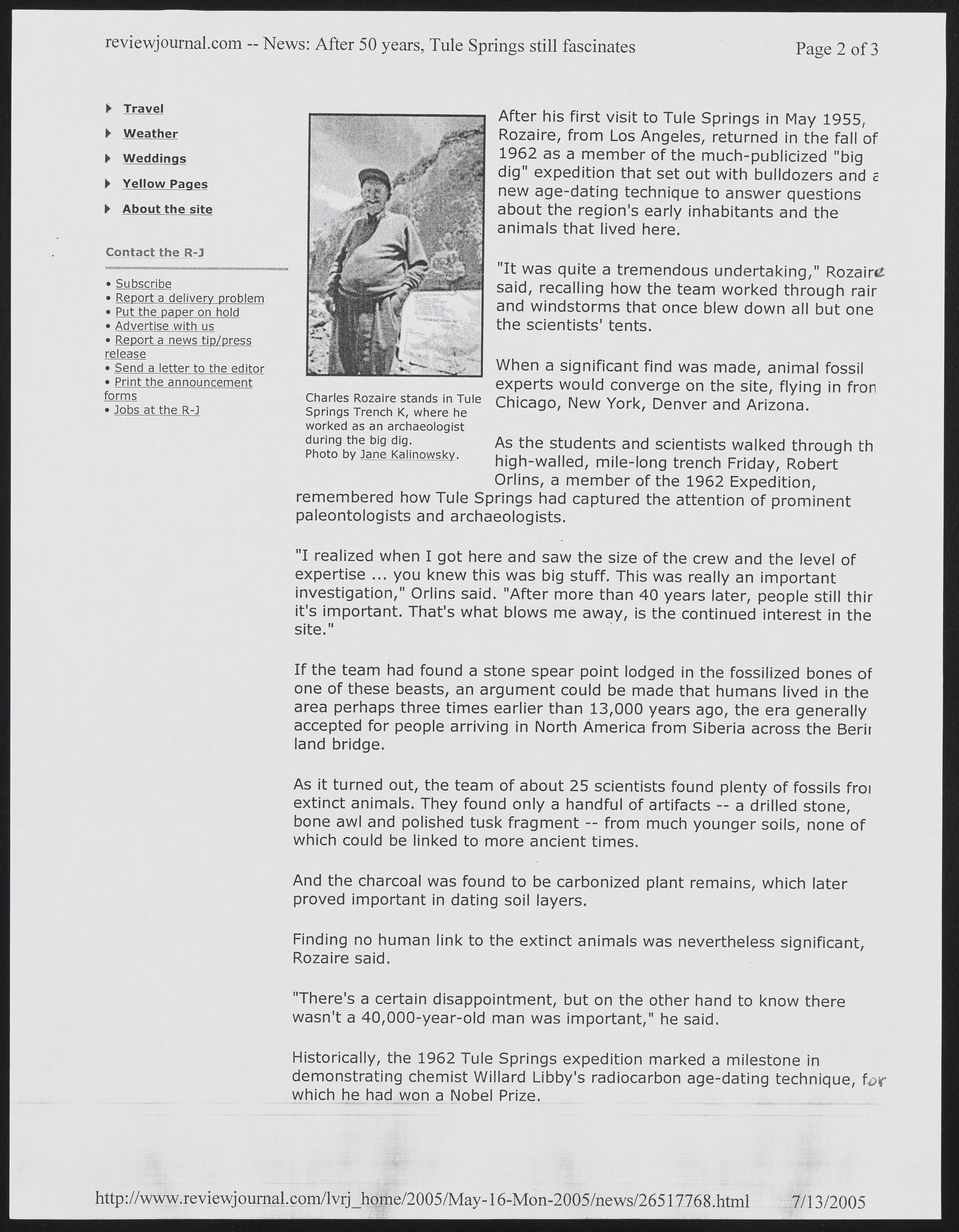Copyright & Fair-use Agreement
UNLV Special Collections provides copies of materials to facilitate private study, scholarship, or research. Material not in the public domain may be used according to fair use of copyrighted materials as defined by copyright law. Please cite us.
Please note that UNLV may not own the copyright to these materials and cannot provide permission to publish or distribute materials when UNLV is not the copyright holder. The user is solely responsible for determining the copyright status of materials and obtaining permission to use material from the copyright holder and for determining whether any permissions relating to any other rights are necessary for the intended use, and for obtaining all required permissions beyond that allowed by fair use.
Read more about our reproduction and use policy.
I agree.Information
Digital ID
Permalink
Details
More Info
Rights
Digital Provenance
Publisher
Transcription
reviewjournal.com — News: After 50 years, Tule Springs still fascinates Page 2 of 3 ? Travel ? Weather ¥ Weddings ¥ Yellow Pages ? About the site • Subscribe • Report a delivery problem • Put the paper on hold • Advertise with us • Report a news tip/press release • Send a letter to the editor • Print the announcement forms I Jobs at the R-J After his first visit to Tule Springs in May 1955, Rozaire, from Los Angeles, returned in the fall of 1962 as a member of the much-publicized "big dig" expedition that set out with bulldozers and e new age-dating technique to answer questions about the region's early inhabitants and the anim als that lived here. "It was quite a tremendous undertaking," Rozaire said, recalling how the team worked through rair and windstorm s that once blew down all but one the scientists' tents. When a significant find was made, animal fossil experts would converge on the site, flying in fron Chicago, New York, Denver and Arizona. As the students and scientists walked through th high-walled, mile-long trench Friday, Robert Orlins, a member of the 1962 Expedition, remembered how Tule Springs had captured the attention of prom inent paleontologists and archaeologists. "I realized when I got here and saw the size of the crew and the level of expertise ... you knew this was big stuff. This was really an important investigation," Orlins said. "After more than 40 years later, people still thir it's important. That's what blows me away, is the continued interest in the site." If the team had found a stone spear point lodged in the fossilized bones of one of these beasts, an argum ent could be made that humans lived in the area perhaps three times earlier than 13,000 years ago, the era generally accepted for people arriving in North America from Siberia across the Berir land bridge. As it turned out, the team of about 25 scientists found plenty of fossils froi extinct animals. They found only a handful of artifacts — a drilled stone, bone awl and polished tusk fragm ent — from much younger soils, none of which could be linked to more ancient times. And the charcoal was found to be carbonized plant remains, which later proved important in dating soil layersliS Finding no human link to the extinct animals was nevertheless significant, Rozaire said. "There's a certain disappointment, but on the other hand to know there wasn't a 40,000-year-old man was important," he said. Historically, the 1962 Tule Springs expedition marked a milestone in demonstrating chemist Willard Libby's radiocarbon age-dating technique, fo r which he had won a Nobel Prize. Charles Rozaire stands in Tule Springs Trench K, where he worked as an archaeologist during the big dig. Photo by Jane Kalinows kv. http://www.reviewioumal.com/lvrj_home/2005/May-16-Mon-2005/news/2651776… 7/13/2005

